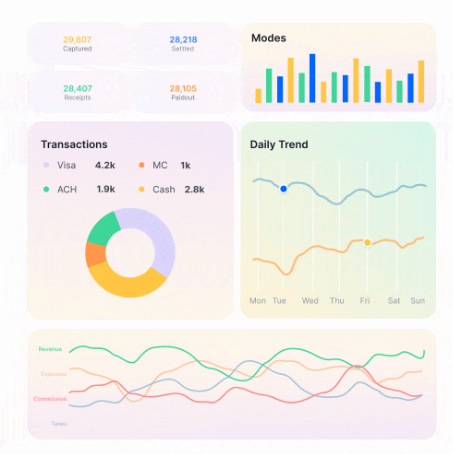An Automated Reconciliation System is a powerful tool designed to streamline financial processes, improve accuracy, and save valuable time for businesses. By automating the matching and verification of transactions, this system ensures that financial data is reconciled efficiently, reducing errors and enabling better decision-making. Let's delve into the benefits and features of an Automated Reconciliation System:
Benefits of an Automated Reconciliation System:
Time-Saving Efficiency:
Automated Reconciliation System the reconciliation process, significantly reducing the time and effort required for manual reconciliation.
Tasks that used to take hours or days can now be completed in a fraction of the time, freeing up valuable resources.
Increased Accuracy:
Manual reconciliation is prone to errors, but an Automated Reconciliation System minimizes mistakes.
By matching transactions and flagging discrepancies automatically, it ensures accurate financial records.
Real-Time Reconciliation:
Enjoy the benefit of real-time reconciliation, providing up-to-date insights into your financial position.
Any discrepancies or outstanding items are identified immediately, allowing for prompt resolution.
Streamlined Processes:
The system streamlines complex reconciliation processes, making them more manageable and efficient.
It can handle large volumes of transactions with ease, ensuring all data is reconciled accurately.
Improved Cash Flow Management:
With timely and accurate reconciliations, businesses can better manage their cash flow.
Identifying discrepancies and outstanding items quickly allows for proactive resolution and improved financial planning.
Enhanced Security:
Automated Reconciliation Systems come with robust security features to protect sensitive financial data.
Encryption, authentication protocols, and user access controls ensure data integrity and confidentiality.
Features of an Automated Reconciliation System:
Transaction Matching:
Automatically matches transactions from various sources, such as bank statements, invoices, and payments.
Matches are based on predefined rules and criteria set by the user.
Rule-Based Reconciliation:
Create custom rules to automate the reconciliation process.
Define rules based on amount, date, reference number, and other parameters for accurate matching.
Exception Handling:
The system identifies exceptions or discrepancies that require manual review.
Users can easily view and resolve exceptions, ensuring all transactions are accounted for.
Bank Integration:
Seamless integration with bank accounts and other financial systems for direct data import.
Fetches bank statements and transaction data, eliminating the need for manual data entry.
Reporting and Analytics:
Generate detailed reconciliation reports for audit trails and compliance purposes.
Analyze trends, identify recurring issues, and track reconciliation performance over time.
Cloud-Based Accessibility:
Many Automated Reconciliation Systems are cloud-based, allowing for remote access from anywhere.
Collaborate with team members, view real-time data, and manage reconciliations on the go.
How an Automated Reconciliation System Works:
Data Import:
Transaction data is imported from various sources, such as bank statements, invoices, and payment records.
The system automatically matches this data using predefined rules and algorithms.
Matching Algorithms:
Sophisticated algorithms compare transaction data and identify matches based on user-defined rules.
Transactions that meet the criteria are automatically reconciled.
Exception Handling:
Transactions that do not match or require manual review are flagged as exceptions.
Users can investigate these exceptions, make corrections, and manually reconcile items if needed.
Reconciliation Reports:
Detailed reports are generated, providing a comprehensive overview of the reconciliation process.
Reports include matched items, exceptions, final balances, and other relevant details for audit purposes.
Conclusion:
An Automated Reconciliation System is a valuable asset for businesses looking to improve efficiency, accuracy, and control over their financial processes. By automating tedious reconciliation tasks, reducing errors, and providing real-time insights, businesses can make informed decisions and focus on strategic initiatives. Consider implementing an Automated Reconciliation System to streamline your financial operations and gain a competitive edge in today's fast-paced business environment.
For more info. visit us:
The benefits of cloud-based accounting systems for small businesses
